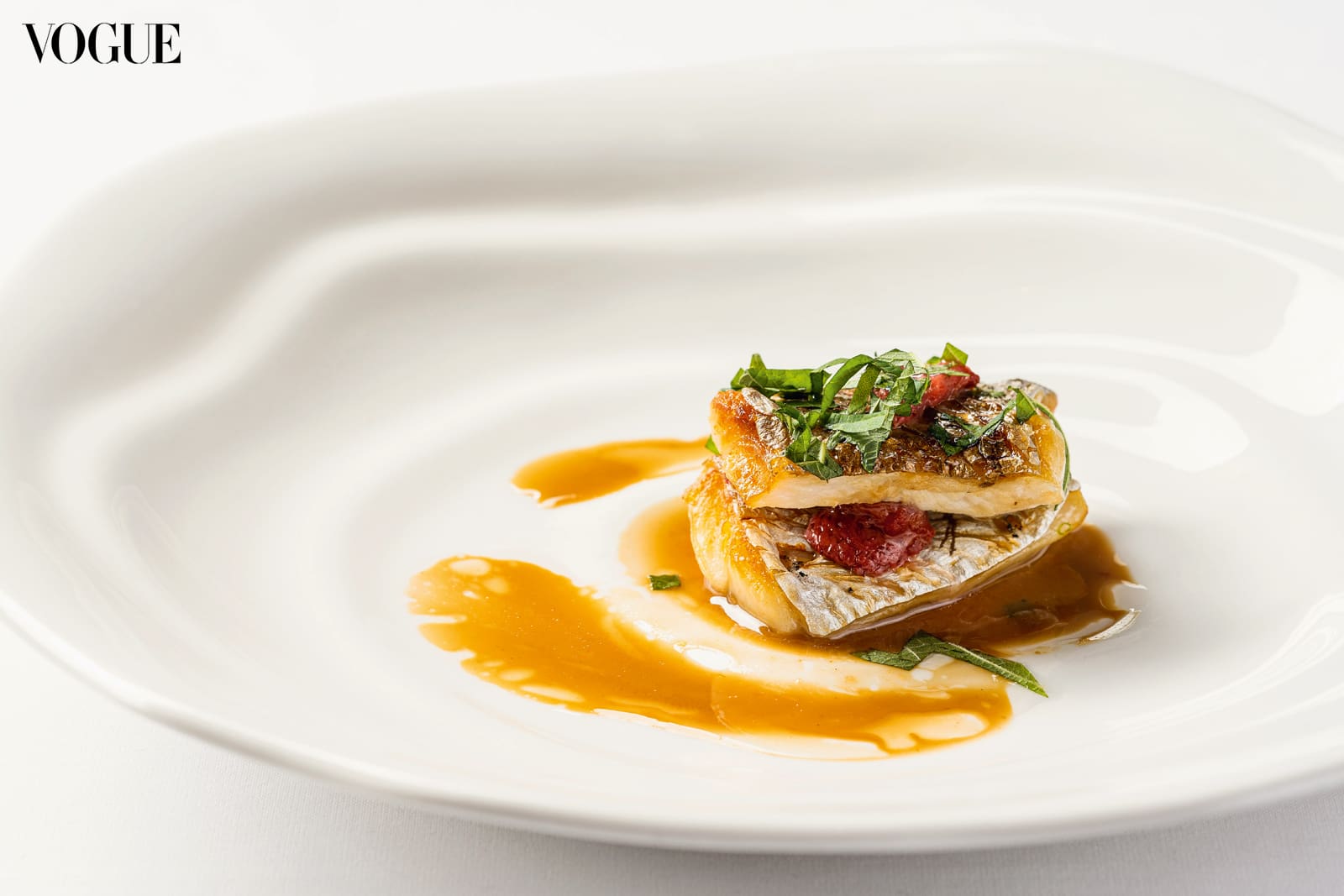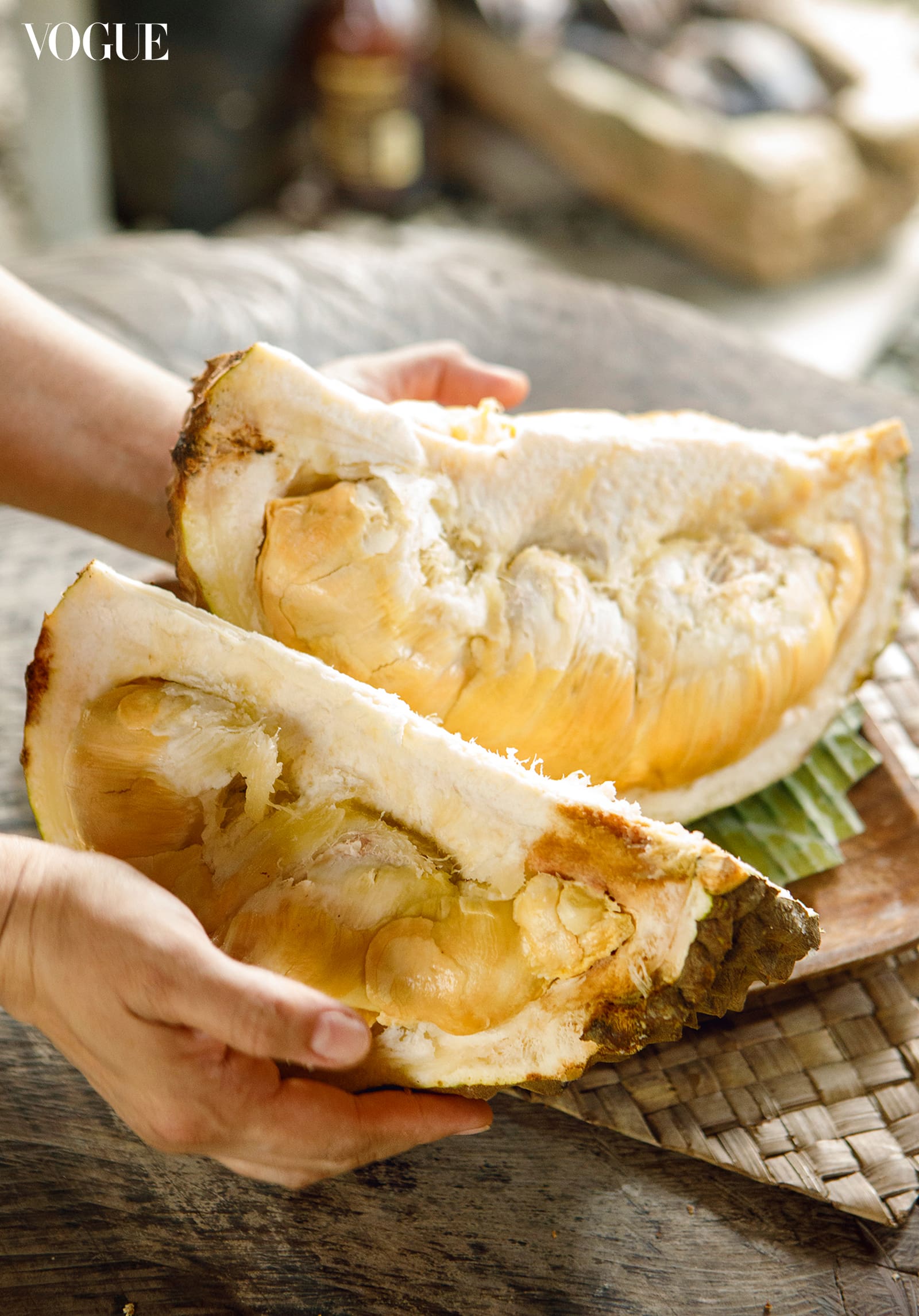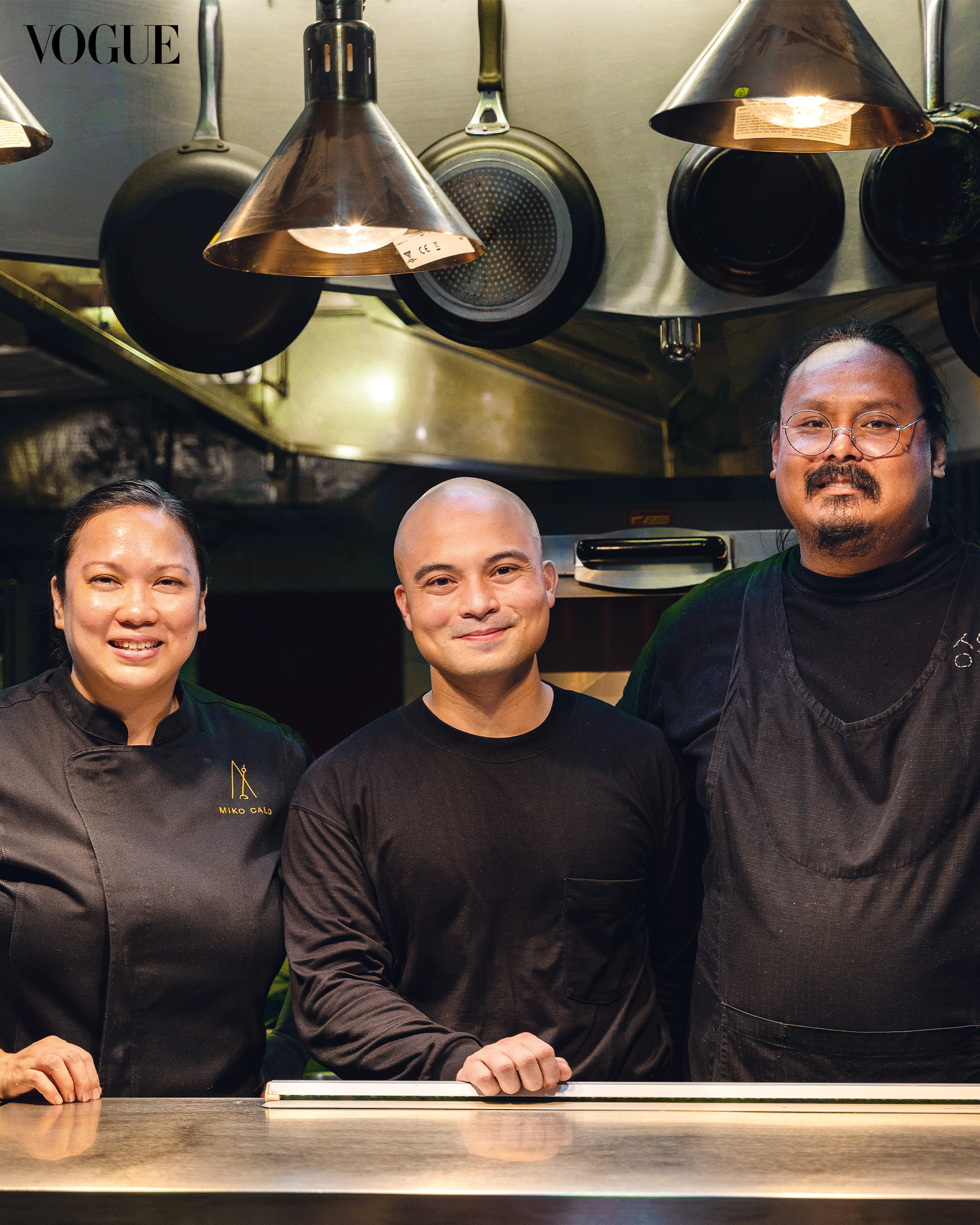Miko Calo, Bruce Ricketts, and Jordy Navarra. Dré Ferrer
Three respected Manila chefs head to Mindanao to rediscover their roots in the cuisine of one of the country’s oldest cities.
As with most ideas, it started as a conversation over a table of good food and drink. Three young and reputed Manila-based chefs had come to realize over the years that among their shared commonalities was their ancestral ties to Butuan. They then decided that the time had come for them to further explore these roots together.
The plan was for Miko Calo, Jordy Navarra, and Bruce Ricketts to come together for a six-hands dinner to celebrate their Butuan heritage. But before the dinner, a trip down south to Butuan, Agusan del Norte to rediscover this shared heritage would be necessary.
“I imagined it to be a small thing at first,” Calo tells Vogue Philippines. “We would go down to Butuan, eat some food, go to the beach—you know, something relaxed and easy.” But the gods had other plans: a chance to promote the rich and varied culture of Butuan through the eyes, minds, and palates of this talented group was an opportunity not to be missed, and its potential was not lost on any of them.
Filipino Roots
Navarra, Calo, and Ricketts make a fascinating trio. The three chefs may share Butuanon roots but their restaurants and styles couldn’t be more disparate. Their cooking may not be autobiographical, but it is definitely personal, and each of them speak with precision and artistry through their food.
Calo, a French-trained chef, grew up in Butuan. After college in Manila, she pursued her diploma in French cuisine from Ferrandi Paris and worked her way through the Joel Robuchon empire with stints in its Paris, London, and Singapore kitchens. She returned to Manila and in 2019 opened her first fine-dining restaurant, Metronome, where she serves modern French fare.
Her Mindanaon roots are present yet subtle in the dishes she serves. Kabayawa, also known as biyasong, is a small fragrant citrus fruit similar to kaffir that is indigenous to Butuan. Calo has paired it with hamachi as an ode to the kinilaw she grew up with.

She also notes that while her restaurant may be characterized as French, there is a lot of Filipino DNA in her food; something that may not be apparent, but she deems as central to her cooking is the balance of the salty, sour, and sweet. The flavors may not necessarily come from local ingredients all the time, but the distinctly Filipino combination informs her style. “The way I put flavors together is a little bit stronger. I use young ginger, I use soy sauce, I use vinegar,” she says. “That salty- sour profile is always there.”
“Butuan has always been a reference point for me,” says Navarra. He stresses however that, having grown up in Parañaque, he does not consider himself a local. The chef shares that he feels a bond with Mindanao, recalling how his father would make multiple trips ‘’home’’ to Butuan and would sometimes take the young Jordy along for the journey.
On the occasions he was left behind, he looked forward to the edible pasalubong his father would bring back. “Durian, and atchara made from young coconut meat and ubod, (heart of the palm) is something I remember enjoying the most. Since the coconut is already sweet, it has less added sugar resulting in a more pickled flavor that I like,” he says.
Navarra, who spent time in the UK refining his skills, worked for Heston Blumenthal at The Fat Duck, and later at BO Innovation in Hong Kong under the tutelage of Alvin Leung. His restaurant Toyo Eatery opened in 2015 and it is here where he showcases his take on Filipino food. In 2018, Toyo Eatery was named as Miele’s One to Watch and has been recognized by the prestigious Asia’s 50 Best Restaurants list for three years in a row.
As a chef and restaurateur, Navarra is dedicated to highlighting local ingredients. Commonly used in Butuan but not grown in the northern islands of the country are the tabontabon and kabayawa fruits that have always been part of his arsenal. In addition to Mindanaon fresh produce, Toyo Eatery makes use of a number of vinegars made from coconut and nipa that are regularly transported from Butuan.

“The three approached it as an opportunity to reconnect with Butuan’s rich culture and history in unexpected ways.”
Reconnecting with culture
Ricketts, on the other hand, is for the most part a self-taught chef, and a martial arts practitioner. He catapulted his way through the Manila food scene over the past decade, first gaining recognition with his restaurant Sensei Sushi Bar. He has gone on to open two more distinct Japanese-influenced establishments, the fast-casual concept Ooma, and a fine dining restaurant, Mecha Uma. He and his wife Jae also opened the taqueria La Chinesca, serving Cali-Mexican fare done “the Bruce” way, reminiscent of the food he ate during his years spent in southern California.
It is through his mother that Ricketts claims a connection to Butuan. “I used to visit as a kid and my memories are mostly those of playing with my cousins and going to the beach, not really about the food,” he reminisces. “ We always had lechon, sugpo (prawns), and crabs but in the past few years I have heard so much about bunta’a binutuntaan, I was excited to finally try it on this trip.”
Given Rickett’s proclivity to working with seafood and his fascination with sustainable fishing, this isn’t surprising. A culinary delicacy specific to Butuan, bunta’a is a heritage crab recipe made with the meat, fat, and roe of female crabs, mixed in with young coconut strips, fresh herbs, and coconut milk. It is a recipe that is usually passed from generation to generation. Surprisingly though, not all households in Butuan have their own versions of this specialty and when it is enjoyed, “experts” are usually called in to prepare this time-honored dish, perhaps suggesting a reverence for its preservation closest to its original form.
For Calo, Navarra, and Ricketts, however, coming together for a collaboration was never meant to be an exercise in authenticity, nor was their trip to be a sentimental journey in search of culinary identity. Instead, the three approached it as an opportunity to reconnect with Butuan’s rich culture and history in unexpected ways.

Unencumbered by the weight of expectation that the trip would have to further influence their individual narratives, Butuan offered a chance to explore, an opportunity to take a deeper look at what it had to say, and for them to take freely what they wanted. And, if and when they saw fit, a chance to forge something new.
This story was originally published in Vogue Philippines’ November 2022 Issue. Subscribe now.
Photography by Miguel Nacianceno and Dré Ferrer
- Inside Filipino Restaurant Abacá, Recognized As One Of The Best In The US
- Toyo Eatery Brings Filipino Identity To The Haute Dining Scene, Minus The Hell’s Kitchen Antics
- An Ode To The Motherland: Filipino Cuisine Takes On The Global Stage
- The Next Generation Of Dessert: A Catch-Up Conversation With Chef Miko Aspiras
